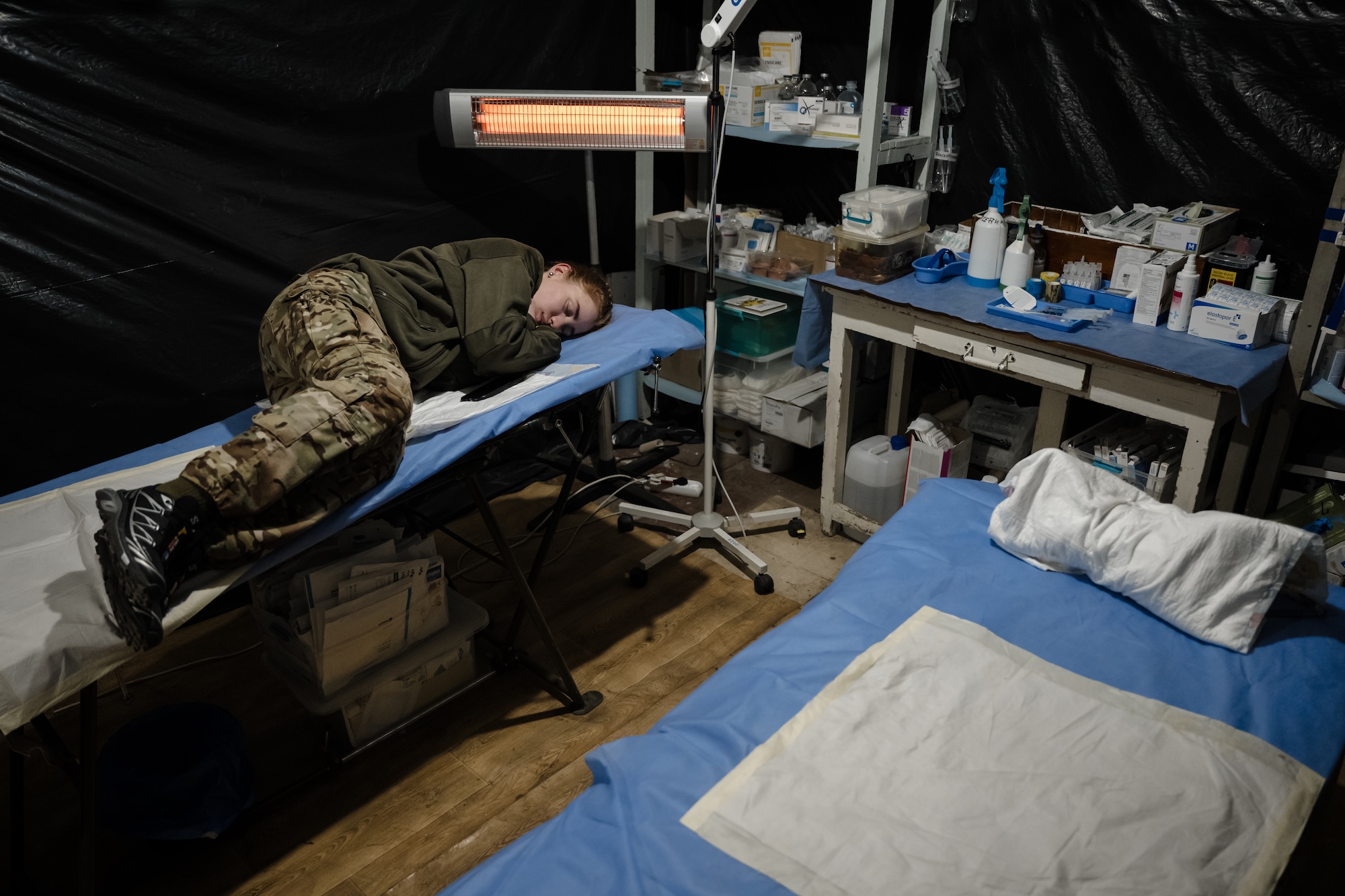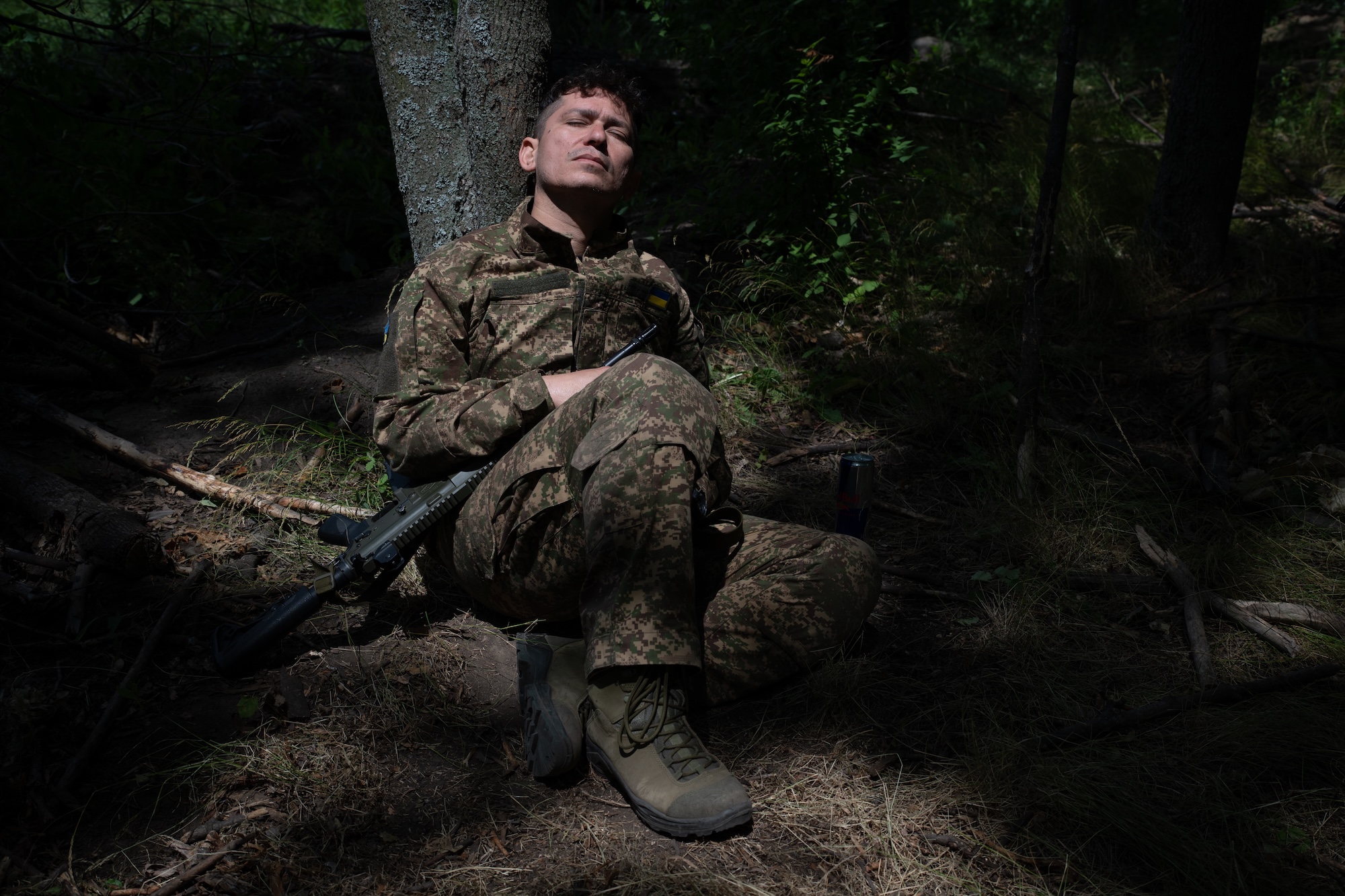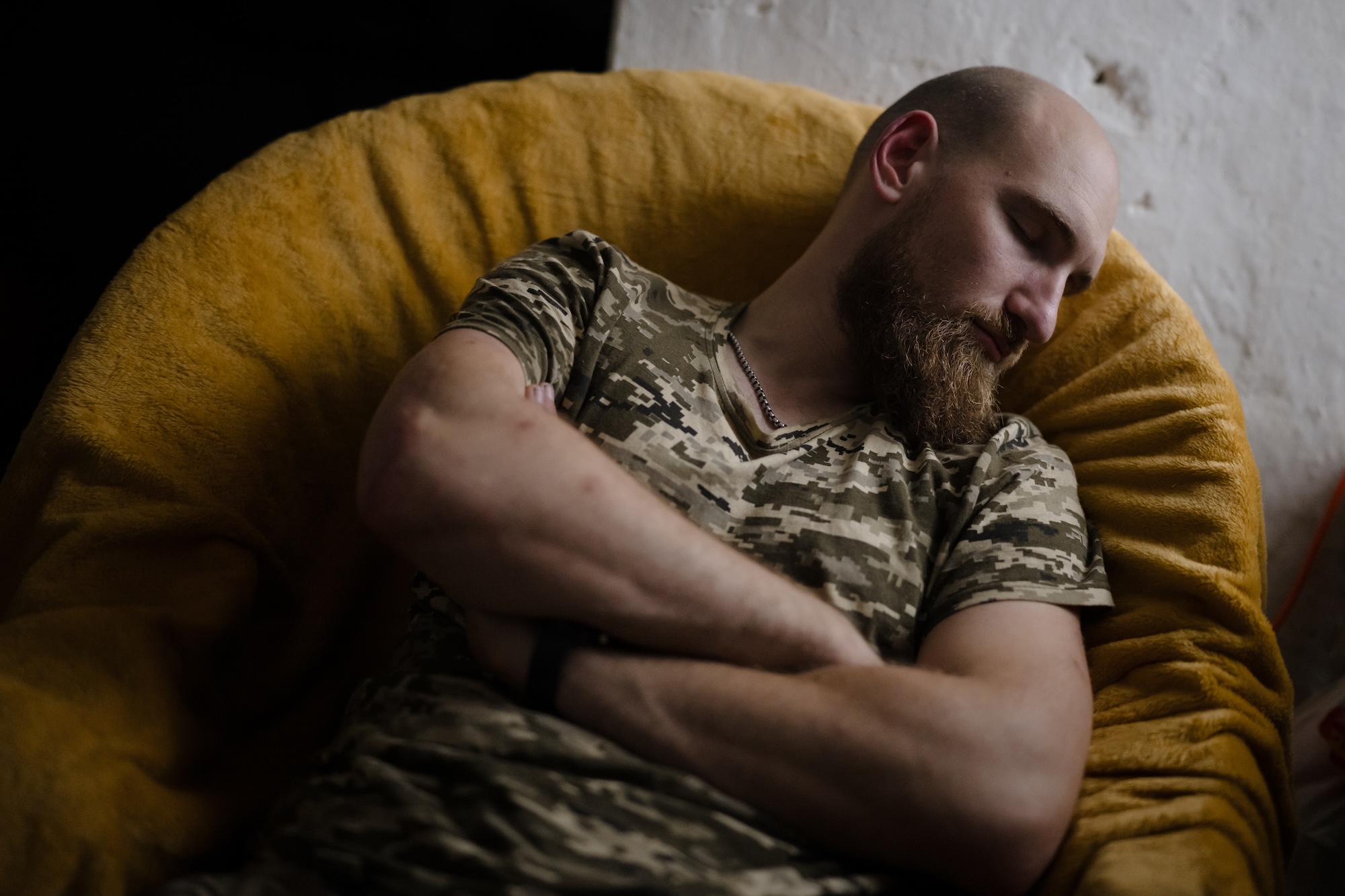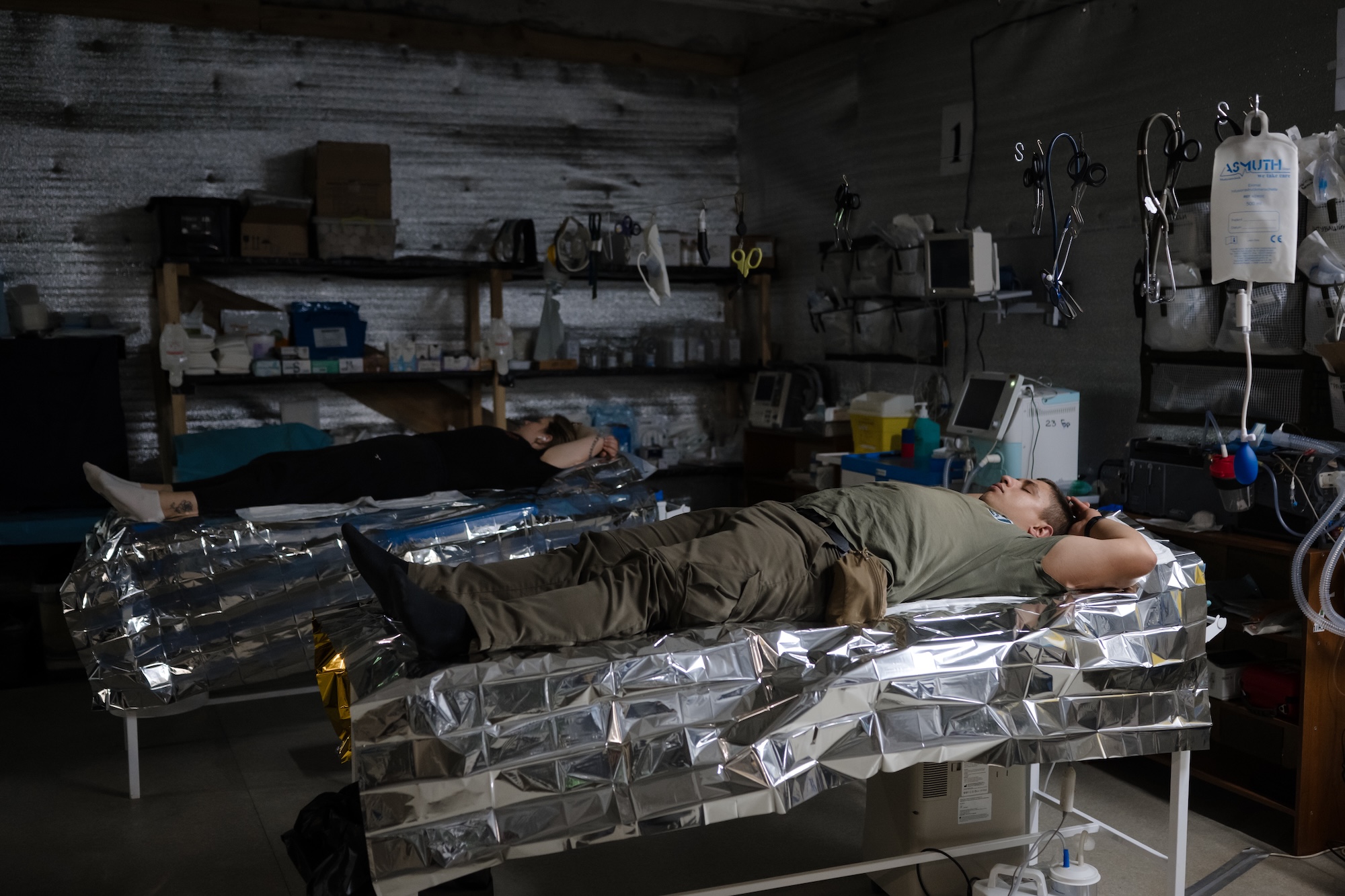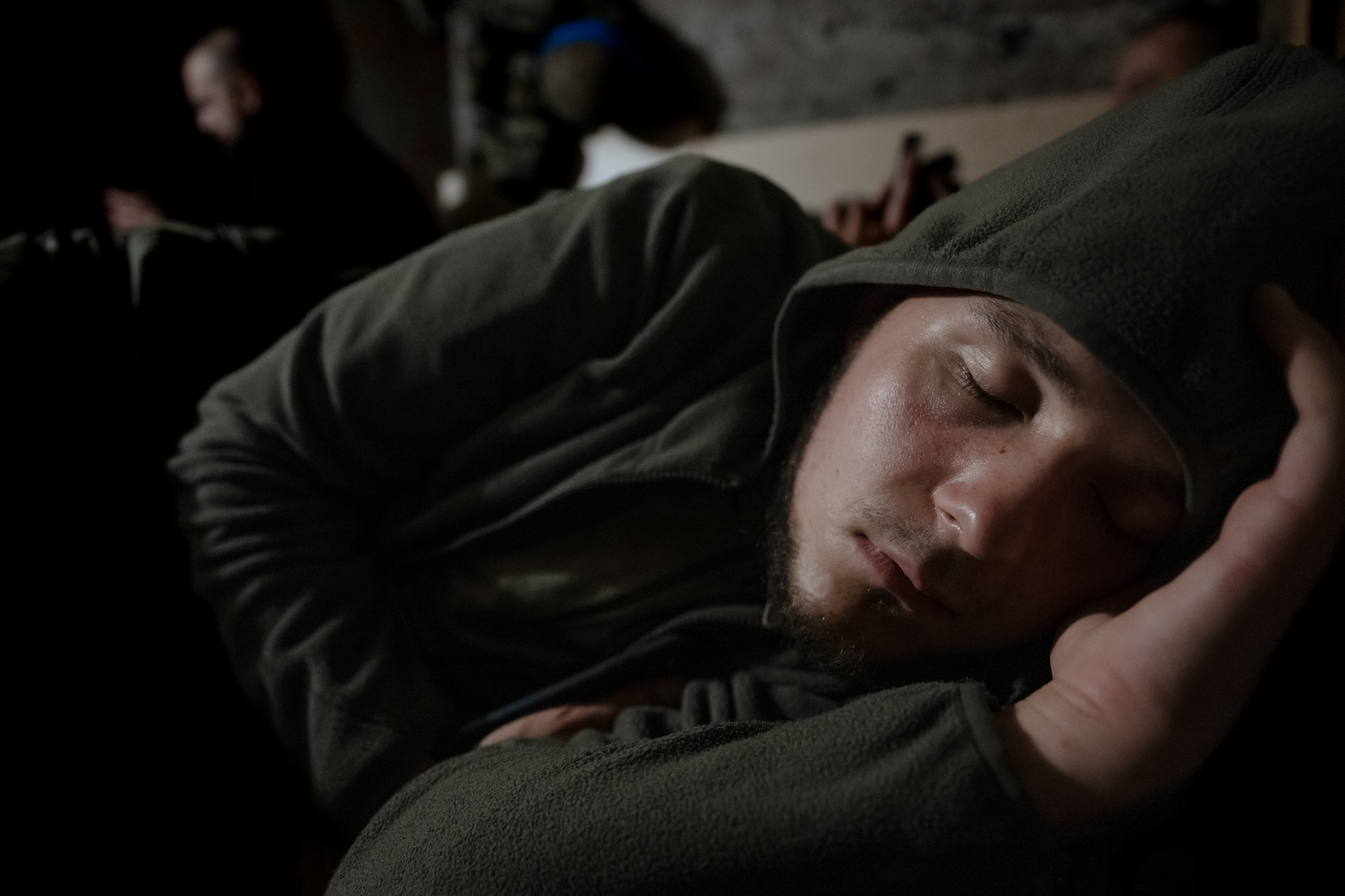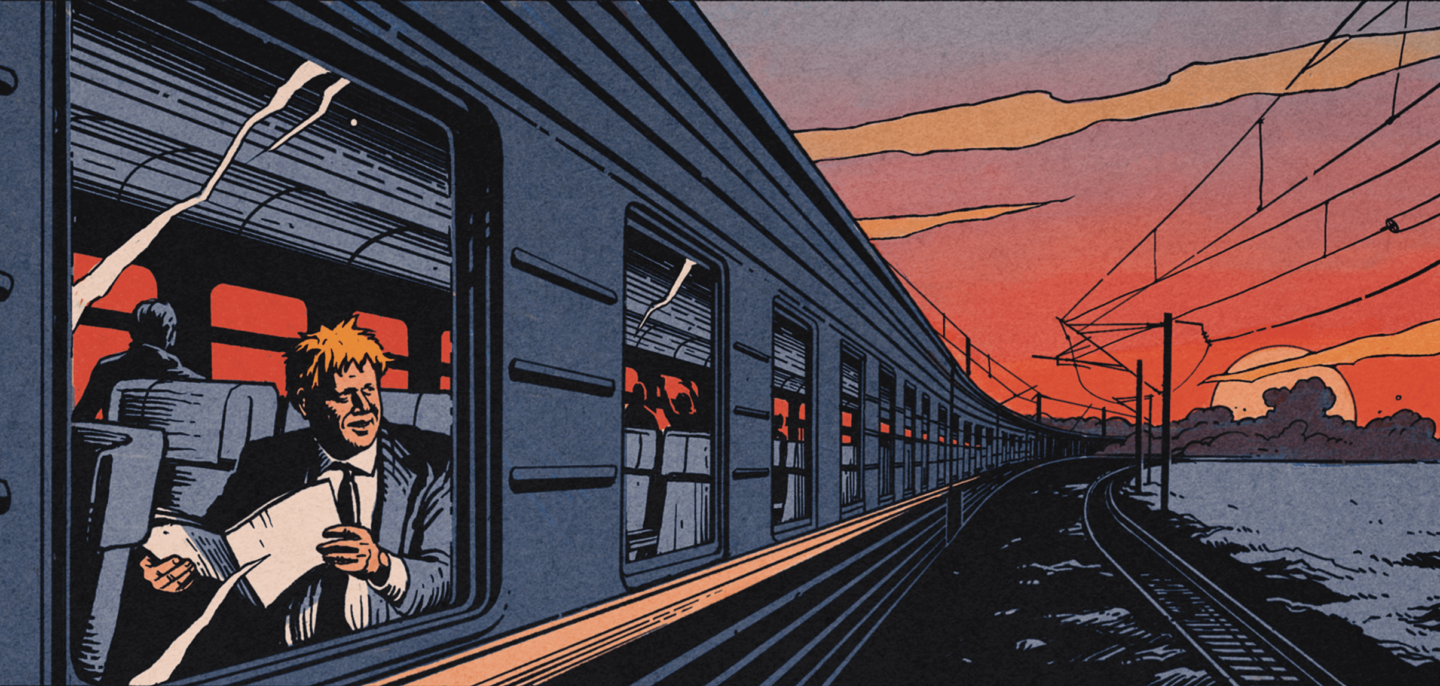Anyone who has spent even a single day in a basement, dugout, trench, house or under the open sky near the front line knows well how sweetly one can sleep to the sounds of outgoing and incoming fire, the shouting over the radio, the humming of an EcoFlow and the flickering of a lamp.
I’ve spent many nights with soldiers all along the front line. Sometimes it was in well-equipped dugouts with bunk beds and folding cots; other times — in tiny cellars lined with jars of homemade preserves, where, at best, a soldier could sleep right on the ground.
There were times I took the spot of exhausted fighters who longed for sleep just as much. And sometimes there simply was no place to rest at all — everyone dozed in turns, half-awake. The soldiers were always welcoming, sharing their food generously and offering the best sleeping spots to others.
Capturing a soldier’s sleep at the front is not that simple — they hardly ever sleep at all. They are always working. I used to wonder: how is it even possible to fall asleep in such places, in such conditions? Now I drift off with pleasure in every minute free from work.
To fall asleep somewhere on the front line, I would always play Frédéric Chopin. For me, sleep at the front sounds like his “Nocturne, Op. 9, No. 2.” When I look again at those peaceful faces in the photographs, it’s Chopin playing in my mind.
Ask any soldier — one of their deepest wishes, when they finally get leave or return from war, is simply to sleep. This series speaks of dreams, rest and the kind of peace that, in wartime, can exist only in sleep — so distant, yet so longed for by everyone.
The exhibition was first presented at the “Human in the Military” conference, initiated by the NGO human rights center for servicemen “Pryncyp.”

